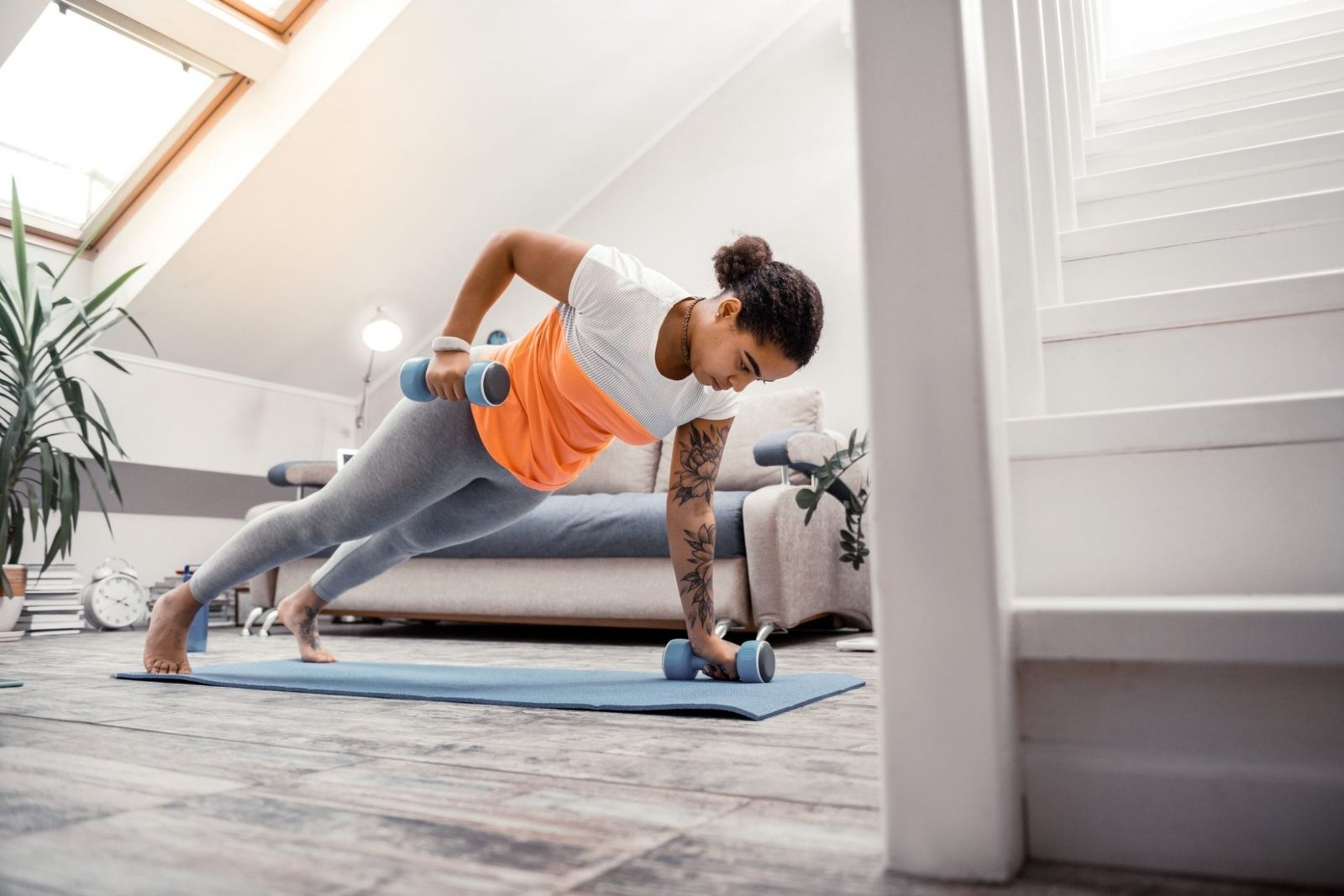According to experts, the safest and most effective way for most women who are overweight or obese to lose weight is to eat less and exercise more. Effective weight loss plans, on the other hand, consist of several components.Weight loss meals that are healthyDietary guidelines that are sensibleThe American Heart Association recommends the following dietary guidelines for most adult women:• Consume five or more servings of fresh fruits and vegetables per day.•
Consume six or more servings of grains per day (preferably whole grains).• Consume fat-free and low-fat dairy products, legumes, seafood, and lean meats.• Avoid foods that contain more than 2 grammes of saturated fat per serving.• Match your caloric intake to your energy expenditure.• Limit your intake of junk food, which is high in simple carbohydrates but low in nutrition.• Reduce your intake of foods high in saturated fat and cholesterol. Consume no more than 6 grammes of salt per day.Tips for meal preparation and meal planning:• Make an effort to eat fruits and vegetables at each meal. Aside from being delicious, they are also high in nutrients and fibre.

They may even aid in the prevention of certain cancers.• Instead of frying in fat, boil, steam, bake, roast, or broil foods.• Choose unsaturated fats like vegetable oils over saturated fats like butter.• When preparing foods, use olive oil spray instead of cooking oils.• Consume white meat chicken or turkey, as well as lean meat, fish, or seafood. Remove the skin from the poultry.• Choose low-fat or fat-free dairy products.• For seasoning, use lemon or lime juice, vinegar, low-sodium soy sauce, plain tomato sauce, salsa, and other low-fat sauces, or mustard.•
Flavor foods with garlic, onions, ginger, herbs, and spices.• Avoid high-fat, high-calorie condiments like mayonnaise, oil, ketchup, salad dressing, and prepared sauces.• With meals, drink water, caffeine-free soda, tea, or coffee.Breakfast recommendations• 1 cup of juice or fresh fruit• Scrambled egg whites or an egg substitute in olive oil spray, or prepared as an omelette.• 6-8 ounces of skim milk with oatmeal or any sugar-free cereal.• Low-fat cream cheese, low-fat cottage cheese, or fat-free yoghurt
• Decaffeinated tea or coffee.Ideas for lunch• 12 cup cooked vegetables (peas, string beans, asparagus, broccoli, summer squash, escarole, cauliflower, brussels sprouts, or carrots)• 12 cup leafy vegetable, such as spinach, kale, or chard• Green salad, plain or seasoned with fat-free dressing, vinegar, lemon, or any combination of these ingredients (non-oil products). Green and raw vegetables such as tomato, cucumber, sprouts, radish, onion, cabbage, mushrooms, and celery should be included.• 12 cup whole-grain pasta in a meatless tomato sauce• Sandwiches made with whole-grain or sourdough bread• 2 ounces of water-packed tuna or salmon•

Two slices of deli meat or a low-fat cold cut.• 1 to 2 ounces low-fat cheeseSuggestions for Dinner• 12 cup cooked vegetables (peas, string beans, asparagus, broccoli, summer squash, cauliflower, brussels sprouts, or carrots)• 12 cup leafy vegetable, such as spinach, kale, or chard• Green salad, plain or seasoned with fat-free dressing, vinegar, lemon, or any combination of these ingredients (non-oil products). Green and raw vegetables like tomato, bell peppers, cucumber, sprouts, radish, onion, cabbage, mushrooms, and celery should be included.• 12 baked chicken breasts or 4 sliced skinless turkey breasts•
White fish, such as snapper or sole fillet, baked or steamed in a simple tomato sauce, lemon, or both.• 2 slices whole-grain or sourdough bread or 12 cup whole grain such as brown rice• 1/3 cup fat-free yoghurt or fat-free sour cream (or less)• One small slice of low-fat or fat-free cake or one cholesterol-free cookie for dessert12 cup fat-free ice cream or fat-free frozen yoghurt• Fruit that is fresh.• Eat unlimited amounts of celery, lettuce, mushrooms, green or red peppers, asparagus, cauliflower, cucumber, and broccoli to satisfy hunger between meals.Eating out of the house•
Plan ahead of time if you’re going out to eat. Consider ordering low-fat, low-calorie foods. Keep in mind that most restaurants serve portions that are much larger than the standard serving size.• When ordering, request a doggy bag or take-out container. Set aside half (or more) of the food as soon as it arrives for future meals. Then finish what’s left on your plate. This will help you avoid overeating.• Omit the bread basket and the appetiser.
• Request that foods be prepared without frying or sauces.• Avoid high-fat side dishes like French fries, coleslaw, and garlic bread.• Request salad dressings on the side, then dip your fork in the dressing before spearing the salad.• Consume plenty of plain water.Increasing your level of activity• Moderate physical activity, such as walking, aids in weight loss and maintenance. It is recommended that you exercise for at least 30 minutes per day.• Make an effort to exercise at least five days per week.•
Any weight loss plan will be sabotaged if you do not exercise. To get in 30 minutes of movement per day, add movement throughout the day, even if it’s in short 10-minute bursts.• Simple changes, such as taking the stairs instead of the elevator, can help you lose weight in the long run.• Exercise helps to strengthen your muscles while also improving the function of your heart and lungs.•
Before beginning an exercise programme if you are obese, especially if you are inactive or have medical problems, consult with a health care professional.Walking• When walking for weight loss, distance is more important than speed. Wear a pedometer to track your steps and then look for ways to incorporate more steps into your daily activities.• To exercise, walk at a pace and distance that is comfortable for your body. Set attainable objectives. If you walk until you’re tired, you’ll be exhausted when you come to a halt.• At a leisurely pace, walk with smooth, rhythmic motions.
• Walk slowly for the first five minutes of each walk to warm up. If you have time after five minutes, walk for ten minutes at a faster pace. Don’t go overboard. You may take a break at any time.• When you have walked for 10 minutes without stopping, you have completed your first goal.
The new objective should be to walk for a little bit longer (say, 12 minutes). Continue to set new goals without going overboard. It is critical not to walk too quickly or for too long.Wear loose clothing during your workouts to allow your skin to breathe. Put on a pair of comfortable jogging shoes or sneakers.• Drink plenty of water before and after working out. This will replace the water lost through perspiration and keep you hydrated. You can drink while exercising if you bring a water bottle with you.• While exercising, monitor your pulse rate frequently (every five minutes).•
• The normal resting pulse rate ranges between 60 and 90 beats per minute. While exercising, your pulse rate should rise slightly. The pulse rate can reach 120 beats per minute. It is normal to feel a little out of breath. If you are out of breath and unable to speak comfortably, take a break and then resume at a slower pace.• Make it a point not to hold your breath while exercising. The body is deprived of oxygen when you hold your breath. Exhale with one movement and inhale with the other.
______
Weight Loss | Don’t forget to follow us on Twitter @njtimesofficial. To get the latest updates





